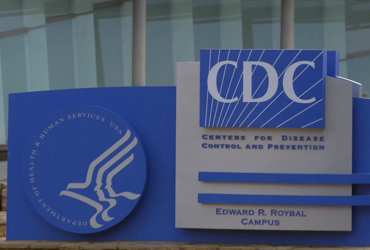By Gina Shaw
The removal of publicly available resources and drastic cuts to the budgets and workforces of the CDC and National Institutes of Health (NIH), as well as the U.S. withdrawal from WHO membership, pose a major risk to public health and the future of infectious disease research, warned experts at a briefing hosted by the Infectious Diseases Society of America (IDSA).

“The lack of infrastructure, workforce and communication, and even brief disruptions in data, may have set us back to the point where we cannot handle the next big outbreak,” said Joshua Barocas, MD, FIDSA, an associate professor of medicine in the Divisions of General Internal Medicine and Infectious Diseases at the University of Colorado School of Medicine, in Aurora.
Although a federal judge issued an order on Feb. 11, requiring the Department of Health and Human Services (HHS), the FDA and the CDC to restore websites and data sets that were abruptly pulled down on orders from the Trump administration beginning in late January, experts at the briefing said the availability of these data remains unreliable.
“Recently, on clinical service, when I turned to find the current situation on flu and H5N1, there were no available updated data,” said Allison Agwu, MD, a professor of pediatrics and internal medicine in the Division of Infectious Diseases at Johns Hopkins University School of Medicine, in Baltimore, and the immediate past chair of the HIV Medicine Association. “Guidelines that are developed and maintained by the Department of Health and Human Services or the [CDC] Centers for these [situations] or ACIP [Advisory Committee on Immunization Practices] for vaccines … are critical to assuring there is a blueprint or guidance on how to manage infectious diseases from STIs [sexually transmitted infections] and HIV to other more obscure infections.”
Several guidelines that had been ordered restored by the judge still had dead links as of late last week, said Rachel Bender Ignacio, MD, an associate professor of allergy and infectious diseases at the University of Washington School of Medicine, in Seattle, and IDSA advocacy chair. “One of the references that I was looking for is the CDC table on timing of catch-up vaccinations for adults. That table was still present, but the links to some of the individual infections and the specific vaccine recommendations for those were down. I can't speak to whether or not those links are still dead … but that is part of the disruption. I shouldn’t have to guess, ‘Is this information there today or not?’” (As of Feb. 19, the main “adult vaccine assessment tool” page was up, but links to the actual tool in English and Spanish both yielded “Error 404 not found” messages.)
The information that was removed represents carefully vetted, evidence-based knowledge meant to help keep Americans safe, Dr. Bender Ignacio said. “We depend on CDC and HHS clinical guidelines to provide uniform, evidence-based and cost-effective care to our patients. The value of this information is even higher to our colleagues practicing in rural areas, those who staff our critical access hospitals, or other places where they may not have that specialist right at their fingertips.”
Dr. Bender Ignacio also criticized the Trump executive order dictating that the word “gender” be replaced with “sex” throughout federal policies and documents, and mandating that government agencies “ensure grant funds do not promote gender ideology.” These deletions, she noted, “will make it more difficult for medical professionals to provide care.”
She cited, as one example, mpox, which is often surrounded by misinformation due to bias against those infected. “If we can't say who is at risk for a disease or talk about disease disparities, then we will end up with neutral messaging” that might stoke fears that mpox is going to spread to people who really are not susceptible to the infection, Dr. Bender Ignacio noted. “We need that specific demographic and technical language to keep people educated, to understand who is at risk, and then appropriately screen and treat people,” she stressed.
Some webpages that were restored include boxed warnings that negate the validity of the information, calling them “extremely inaccurate” because they discuss various gender roles and identities. “The Trump Administration rejects gender ideology and condemns the harms it causes to children, by promoting their chemical and surgical mutilation, and to women, by depriving them of their dignity, safety, well-being, and opportunities. This page does not reflect biological reality, and therefore, the Administration and this Department rejects it,” the warnings read.
Funding Under Threat
The Feb. 7 announcement of an immediate cut in reimbursement of indirect costs for all NIH grant awards to a ceiling of 15% also poses a major threat to public health, Dr. Bender Ignacio said. “As a scientist, it is incredibly disheartening that my entire career in life's work could be canceled by slashing funding, including shutting down productive programs mid-stride. More importantly, we owe transparency and productivity to the American people to produce something with the money spent, and not build it halfway and then burn it down.”
She noted that research has already been disrupted and cannot easily be put back on track. “Grant review has been put on pause in many of these Institutes,” she said.
Study sections have been scheduled much later than usual, and the entire cycle is disrupted. “And when we disrupt the cycle for even a week, a month, that's thousands of scientists, thousands of experiments and thousands of non-federal employees who are impacted. We are behind and we will continue to fall behind.”
Dr. Barocas noted that the NIH funding opportunities website has not released any new ID grants since Jan. 22, 2025. “Usually, we see anywhere between one to 40 new grant announcements on a weekly basis,” he said.
After a verbal announcement of job firings on Friday, Feb. 14, termination letters were sent over the weekend to thousands of NIH employees, including at the CDC and FDA. Copies of the letters obtained by media organizations, including CBS News and the Associated Press, cited performance issues, stating: “Unfortunately, the Agency finds that you are not fit for continued employment because your ability, knowledge and skills do not fit the Agency's current needs, and your performance has not been adequate to justify further employment at the Agency." (https://www.cbsnews.com/news/thousands-of-probationary-federal-health-agency-workers-fired-by-letter-this-weekend/)
The Associated Press has reported that the layoffs total 5,200 “probationary employees” across the agency, including approximately 1,300 CDC employees, or 10% of the agency’s workforce. In audio from an NIH department meeting shared with the AP, a director said some probationary staff with “specialized skills” might be retained. (Probationary status in the federal workforce can refer to an individual who has been working in the federal government for less than two years, before full civil service protections apply, or to longtime civil service workers who have moved to a different position or changed agencies.) A statement emailed to the media by Andrew Nixon, HHS director of communications, said: “HHS is following the Administration’s guidance and taking action to support the President’s broader efforts to restructure and streamline the federal government. This is to ensure that HHS better serves the American people at the highest and most efficient standard."
However, according to a release from the Association for Professionals in Infection Control and Epidemiology (APIC), the layoff included all 50 first-year officers in the Epidemic Intelligence Service. Collectively, these steps “will cause continued disruptions in our understanding of diseases,” Dr. Barocas said. “Without accurate and up-to-date data, we clinicians and public health experts cannot treat you effectively.”
Alternative Information Sources
As alternative resources, the experts recommended the WHO’s website, as well as that of the European Centre for Disease Prevention and Control (www.ecdc.europa.eu/en). “I know that many people are actively working to look at archived data before it had been taken down and compare it to data that is now back up,” Dr. Barocas said. “It is still reasonable to grab some data from the CDC or other U.S. federal websites, but look at it with a skeptical eye.”
Still, cobbling together disparate, local infectious diseases resources is not ideal, Dr. Bender Ignacio stressed. “What is important for us functioning as a country is all of that data becoming aggregated and being visible across different public health jurisdictions,” she said. “State and local health jurisdictions cannot function without funding, communication and coordination from the federal level.”
The speakers urged infectious disease professionals to reach out to their elected officials to make their voices heard. “We need the data, and to trust that we have experienced and trusted public health experts interpreting that data and providing guidance,” Dr. Agwu said. Whether it is spreading avian flu, HIV, Ebola or some novel pandemic virus, “we as a society cannot afford to be caught with blinders on, missing the signs, unaware of the emerging dangers, without a chance to prevent, to treat, to contain, and in some cases, survive.”



